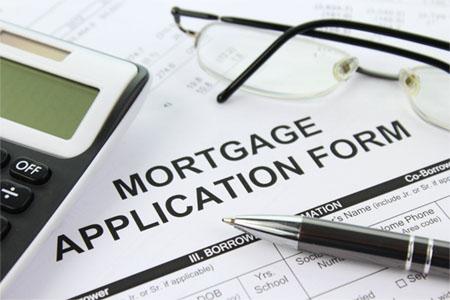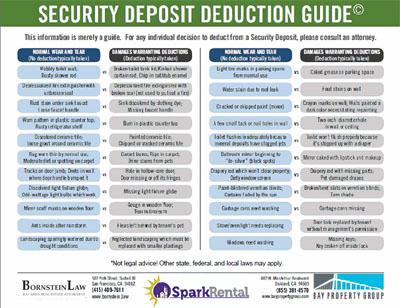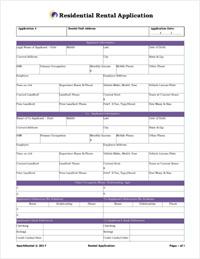Investment Property Loans: Buy, Rehab, Flip or Keep
Short-Term Loans for Flips, Long-Term Mortgages for Rentals
But one of the greatest advantages in real estate is that you can leverage other people’s money to build your investment portfolio. Still, one of the most common questions (and complaints) we hear from investors is
“Where can I find reliable loans for investment properties?”
For your first few deals, you can probably get away with a conventional mortgage loan, at low-ish interest rates. But conventional lenders don’t like seeing multiple investment property mortgages on your credit report, and quickly stop lending (usually maxing out at four mortgages reporting).
So we’ve reviewed dozens of industry lenders, and formed partnerships with many who specialize in investment property loans. Here’s everything you need to know to get started, from long-term landlord loans for 15-30-year mortgages to short-term fix ‘n flip loans and even rotating lines of credit.
Jump to Loan Comparison Charts
→Short-Term Purchase-Rehab Loans
→Commercial, Apartment Buildings, & Construction Loans
→What Is an Investment Property Loan?
→What Types of Lenders Work with Landlords & Investors?
→Is It Hard to Get a Loan for an Investment Property?
→How to Get an Investment Property Loan (90 Seconds)
→Tips for Financing Investment Properties
What Is an Investment Property Loan?
You can borrow money to buy an investment property that you don’t plan to live in, just like you can take out an owner-occupied home mortgage loan.
The interest rates and fees are higher, because the risk of default is higher. After all, if you hit hard times, you default on your investment property mortgage before your home loan!
As outlined above, you can borrow short-term hard money loans to buy and renovate properties (to flip or refinance as BRRRR deals), or you can borrow long-term rental property mortgages. The latter tend to come with lower interest rates than brief purchase-rehab loans.
Different types of lenders require different documentation for investment property loans. For example, portfolio lenders often don’t verify your income, but they do check the property’s DSCR (debt service coverage ratio).
Long-Term Landlord Loan Options
Looking for a 15-30-year mortgage to buy a rental property? Or to refinance for a long-term landlord loan, after renovating a fixer-upper?
The three best lenders we’ve found for long-term landlord mortgages are Visio, Kiavi, and Lending One.
All are collateral-based lenders, more interested in the property itself than they are in you as a borrower. In fact, they don’t ask for any income documentation at all!
We could wax poetic… but you’d probably rather just see the loan comparison chart:
| Conventional Mortgage Lenders | Forman Loan Services | Kiavi (formerly LendingHome) | LendingOne | Visio | RCN Capital | New Silver | Lendency | Conventus | |
|---|---|---|---|---|---|---|---|---|---|
| Where to Check Rates | Try Credible | Instant Rate Quote | Kiavi Rates | LendingOne Rates | Visio Rates | RCN Capital Rates | New Silver Rates | Lendency Rates | Conventus |
| Loan to Value (LTV) | 80-97% owner-occ, 75-80% rentals | Up to 80% | Up to 80% | Up to 80% | Up to 80% | Up to 80% | Up to 80% | Up to 80% | Up to 80% |
| Credit Score | 580+ | 660+ | 660+ (no hard credit pull) | 680+ | 680+ | 660+ | 680+ (no hard credit pull) | 660+ | 620+ |
| Debt-to-Income Ratio (DTI) | 28% - 36% | No income docs required | No income docs required | No income docs required | No income docs required | No income docs required | No income docs required | No income docs required | No income docs required |
| Cash Reserve Requirements | 6-12 mos.' payments | 9 mos.' payments | None | 6 mos.' payments | 6 mos.' payments | 9 mos.' payments | 6 mos.' payments | 6-12 mos.' payments | 3-6 mos.' payments |
| Min. Interest Rate | 6.50-8.625%+ owner-occ, 7.49-9.49%+ rentals | 6.90%+ | 7.9%+ | 6.25%+ | 7.97%+ | 7.99%+ | 7.95%+ | 6.375%+ | 7.375%+ |
| Repayment Term | 15 or 30 Years | 5/1 ARM, 7/1 ARM, or 30-year fixed. Non-recourse loans available. | 3/1 ARM, 5/1 ARM, 7/1 ARM, 30-year fixed, or interest-only | 5/1 ARM, 7/1 ARM, or 30-year fixed | 5/1 ARM, 7/1 ARM, or 30-year fixed | 3/1 ARM, 5/1 ARM, 7/1 ARM, 30-year fixed, or 5- or 10-year interest-only | 30-year fixed | 5/1 ARM, 7/1 ARM, 10/1 ARM, or 30-year fixed | 30-year fixed |
| Time to Funding | 30-60 Days | 14-21 Days | 10-30 Days | 10-30 Days | 21-30 Days | 14-21 Days | 5 Business Days | 20-30 Days | 30-45 Days |
| Loan Limits | $50,000 - $726,200 (higher in some markets) | $55,000+ (no limit) | $75,000 - $2M | $75,000 - $2M | $75,000 - $2M | $55,000 - $2M | $100,000 - $2M | $55,000 - $2M | $150,000 - $9 million |
| Prepayment Penalties | Varies by lender; as high as 5% within 1 year | 0-5 years available | 3% first year, 2% second year, 1% third year, none after 3 years | 80% of 6 months' interest within first 3 years | 3, 5, or 7-year options, including a 3-year step-down pre-payment penalty option | 0-5 year prepayment options | 3 or 5 year options | 2, 3 or 5 year options | 3 Year Stepdown (3-2-1%) |
| States Serviced | Credible is licensed in all except: HI, MO, NV | All except: AZ, CA, MN, NV, ND, SD | AL, AR, AZ, CA, CO, CT, DC, FL, GA, IL, IN, KS, KY, MA, MD, MI, MN, MO, NC, NJ, NV, NY, OH, OK, OR, PA, SC, TN, TX, VA, WA, WI & WV | All Except: AK, NV, ND, SD & UT | All Except: AK, DE, ID, MN, ND, NE, NV, OR, RI, SD, UT, VT | All Except: AK, HI, NV, ND, SD & VT | All Except: AK, AZ, CA, CO, DC, ID, MN, NV, ND, OR, SD, UT & VT | All Except: AK, AZ, CA, ID, MN, NC, ND, NV, OR, RI, SD, TN, UT, VA,VT | All except: AZ, DC, MN, MT, ND, NV, SD, VT & UT |
| Report to Credit Bureaus? | Yes | No | No | No | No | No | No | No | No |
| Where to Apply | Try Credible | Forman Loans | Kiavi (no hard credit pull) | LendingOne | Visio Lending | RCN Capital | New Silver | Lendency | Conventus |
Psst: Not sure what all these terms mean? Don’t sweat it – we have a Mortgage Glossary at the bottom of the page!
Instant Rate Quote from Lendency
Mortage Interest Rate Trends
Note these are for owner-occupied mortgages, not rental property mortgages or purchase-renovation loans.
But you can still use an owner-occ mortgage if you house hack! Try Credible* to compare rate quotes.
Rental Property Loans: How to Scale
 You’re already familiar with traditional banks and mortgage lenders. They typically offer reasonable interest rates and 75-80% LTV (loan-to-value ratio) for rental property mortgages.
You’re already familiar with traditional banks and mortgage lenders. They typically offer reasonable interest rates and 75-80% LTV (loan-to-value ratio) for rental property mortgages.
That’s the good news.
The bad news comes in three stripes:
-
- They often won’t lend to LLCs or other legal entities,
- They report the loan to the credit bureaus, and
- They don’t allow more than a few (usually four) mortgages reporting on your credit report.
While one mortgage, maybe two, reporting on your credit can improve it, five investment property mortgages is good way to wreck your credit.
So where can you get a rental property loan, if you already have a mortgage or two reporting?
Easy: online portfolio lenders who specialize in landlord loans. We’ve vetted the lenders above, and found them all to be transparent about pricing and fees, and relatively easy to close with.
If you’re buying your first rental property, consider a traditional mortgage through Credible* (ideally by house hacking). But you’ll quickly want to graduate to portfolio lenders like Lending One and Visio.
Short-Term Purchase-Rehab Loans
Looking to flip a house, or buy a rental property using the BRRRR method?
Sometimes you just need a quick loan to buy a new property and renovate it. For that, look to purchase-rehab loans.
While Visio only offers landlord loans, Kiavi and Forman Loan Services both offer great fix-and-flip options, in addition to landlord loans. If you want to go the local hard money loan route, try asking around locally to find a few nearby hard money lenders to price them out for short-term renovation loans.
We condensed the loan terms and info for you in a compact comparison chart:
| 203K Loan | Forman Loan Services | Kiavi (formerly LendingHome) | LendingOne | New Silver | RCN Capital | Lendency | Conventus | |
|---|---|---|---|---|---|---|---|---|
| Where to Get a Quote | Credible | Rate Comparison | Kiavi Rates (no hard credit pull) | LendingOne | New Silver | RCN Capital | Lendency Rates | Conventus |
| Occupancy | Owner-occupied (house hacking) | Non-owner-occupied | Non-owner-occupied | Non-owner-occupied | Non-owner-occupied | Non-owner-occupied | Non-owner-occupied | Non-owner-occupied |
| Credit Score | 640+ | 660 | 660+ | 680+ | 650+ (no hard credit pull) | 620+ | 575+ | 620+ |
| Time to Funding | 30-60 Days | 7-10 business days | 5-15 business days | 10-14 business days | 5+ business days | 14-21 business days | 5 business days of a full file receipt | 5-10 business days |
| Interest Rates | 5-8.5% | 9.9%+ | 9.25%+ | 7.49%+ | 8%+ | 10.24%+ | 8%+ | 9%+ |
| Repayment Term | 15-30 Years | 12-24 months | 12, 18, or 24 months | 12 months | Up to 24 months | 12 months | 12 months | 6-18 months |
| Prepayment Penalties | None | None | None | None | None | None | None | None |
| Down Payment | 3.5-10% | 10%+ | 10-15%+ | 10%+ | 9%+ | 10%+ | 10%+ | 15%+ |
| Loan to Value (LTV) | 90-97.5% | Max. 90% | Max. 90% (Preferred), 85% (Standard) | Max. 90% | Max. 75% of ARV (85% LTP) | Max. 90% | Max. 90% | Max. 85% |
| Loan Points | 0-2 (varies by borrower qualifications) | 2 | 1-4 (varies by borrower qualifications) | 1.75+ (varies by borrower qualifications) | 1.875%+ | 1-2 (varies by borrower qualifications) | 2 | 0-2 (varies by borrower qualifications) |
| Loan Limits | Varies by # of units | $55,000+ (no limit) | $75,000 – $1.5M | $75,000+ | $75,000 – $3M | $50,000 – $7.5M | $50,000+ | $150,000+ |
| Debt-to-Income Ratio (DTI) | 31% front-end, 43% back-end | No income docs required | No income docs required | No income docs required | No income docs required | No income docs required | No income docs required | No income docs required |
| Closing Costs | Varies by borrower qualifications | $1195+ | Varies by borrower qualifications | $2500+ | Varies by borrower qualifications | Varies by borrower qualifications | Varies by borrower qualifications | Varies by borrower qualifications |
| Cash Reserve Requirements | 3 Months | 3 months per property | $0-25K depending on # of properties flipped in last 2 years | 6 months per property | 4 months per property | 6 months per property | None | 6 months per property |
| # of Units | 1-4 | No limit | 1-4 | 1-4 | 1-50 | 1-4 | 1-60 | No limit |
| States Serviced | All | All except: AZ, CA, MN, NV, ND, SD | AL, AR, AZ, CA, CO, CT, DC, FL, GA, IL, IN, KS, KY, MA, MD, MI, MN, MO, NC, NJ, NV, NY, OH, OK, OR, PA, SC, TN, TX, VA, WA, WI & WV | All except: AK, NV, ND, SD & UT | All Except: AK, AZ, CA, CO, DC, ID, MN, NV, ND, OR, SD, UT & VT | All except: AK, NV, ND, SD & VT | All except: AK, AZ, CA, ID, MN, NC, ND, NV, OR, RI, SD, TN, UT, VA,VT | All except: AZ, DC, MN, MT, ND, NV, SD, VT & UT |
| Where to Check Rates | Credible | Instant Rate Quote | Kiavi Rates | LendingOne | New Silver | RCN Capital | Lendency | Conventus |
Short-Term Purchase-Rehab Loans for Real Estate Investors
 Typically, the process works like this: you settle within 10-14 days, with money escrowed for renovation draws. You do the first round of work (AKA the first “draw”), and the lender sends an inspector out to review the work.
Typically, the process works like this: you settle within 10-14 days, with money escrowed for renovation draws. You do the first round of work (AKA the first “draw”), and the lender sends an inspector out to review the work.
If the work in the first draw is complete, the lender releases the money for that draw, to reimburse you. Then you do it all over again for the second draw, and so forth.
For example, you borrow $75,000 for the purchase, plus $30,000 for renovations. That $30,000 is split into five $6,000 draws.
The first draw may involve replacing the furnace, updating the ductwork, and replacing the air conditioning condenser. You and/or your contractors do that work, the lender comes out and inspects, then releases the first $6,000 to you. And so on.
If you talk to banks, make sure they lend to legal entities (like LLCs), if you use them to help protect against lawsuits. Many conventional lenders and banks will only lend if you own the property under your individual name.
Landlord lenders, hard money lenders, and most investment property lenders have no problem with lending to legal entities.
Rotating Lines of Credit
Mortgage loans are all well and good, but they’re not exactly flexible.
Many investors love the flexibility to draw money as they need it, then pay it back on their own schedule. You can draw money to buy a new property, or to make renovations (or both). Then you can refinance with a long-term rental property mortgage (as with the BRRRR method), or just pay off the balance as you can.
Here are three of the most common options for rotating credit lines. Note that you can still get a HELOC against rental properties, but the LTV tends to be lower and the interest rates higher.
| HELOC (Against Home or Rentals) | Business Credit Lines & Cards | Personal Credit Card | |
|---|---|---|---|
| Where to Check Rates | LendingTree | Fund & Grow | Credit.com |
| Maximum Credit Line | 70-100% of Property Value | $150,000-250,000 typically (depends on credit) | $10,000-100,000 typically (depends on credit & income) |
| Initial/Closing Costs | 3-4.99% | $3,997 | $0 |
| Income Documentation | 2 months' bank statements, 2 years' tax returns | None | Varies |
| Secured by Lien Against Property? | Yes | No | No |
| Interest Rates | 3-11.5% | 0% initial, then 7-22% | 8-25% |
| Cash Withdrawal Fee | 0% (usually) | 2-2.5% | 3-6% |
| Draw Period | 2-5 Years | Indefinite | Indefinite |
| Application Approval Timeline | 0-5 Days | 0-7 days | 0-7 days |
| Minimum Credit Score | 620 for primary residences, 680 for investment properties | Technically none, but expect lower credit limits if under 650 | None |
| Report to Credit Bureaus? | Yes | No | Yes |
| Where to Apply | LendingTree | Fund & Grow (Business Credit Concierge) | Credit.com |
Unsecured Business Credit Lines, Cards, and Concierges
Here’s where things get interesting.
As a real estate investor with an LLC, you’re a small business owner. You qualify for rotating business credit lines, in the form of either a traditional line of credit or a series of business credit cards.
We’ve partnered with Fund & Grow to help you navigate this process and get between $50,000-$250,000 in combined business credit lines. They charge a (hefty) up-front fee, but they guarantee three rounds of financing over 12 months. And they get results.
It works like this: for a one-time fee, they connect you with the best business credit cards available currently. They aim for 0% interest on all cards, for the first 9-12 months. They negotiate with the credit card companies on your behalf, helping you get the largest possible credit line.
Once approved for your first round of cards and funding, they then help you scrub your credit report to remove the “dings” from the first-round credit inquiries. A few months later, they do it all over again, raising another round of credit lines through new cards. Then they scrub your credit again, and repeat it a third time.
No income documentation required. But your credit does matter – the higher your credit score, the higher the lines of business credit they can secure for you.
Oh, and they also show you how to pull cash from these cards to pay for real estate settlements, with only a 2.5% fee.
Get prequalified here with a soft credit inquiry with no ding, to get a sense for how much business credit you can qualify for.
Free Webinar: Real Estate Investor’s Guide to $50k – $250k in Business Credit
Our own Brian Davis joins Ari Page, CEO of Fund & Grow, and Mike Banks, COO of Fund & Grow, to walk through exactly how real estate investors can get up to $250,000 in unsecured business credit lines and cards for real estate investing.
Commercial, Apartment Building, and Construction Loans
Looking to buy an apartment building with five or more units? How about an office building, retail space, or other commercial property?
Or perhaps build your own from the ground up?
Try RCN Capital to buy multifamily or mixed-use properties. If you’re looking to buy a larger apartment building, try Commercial Loan Direct for affordable, flexible financing for commercial properties. They put no upper limit on financing, but they do have a minimum loan amount of $1,000,000. These loans aren’t for your typical triplex!
We also included unsecured credit lines as an alternative option, for smaller funding projects. And because we love the flexibility of rotating credit accounts!
| Apartment (5+ Units) & Mixed Use Buildings | Apartment (5+ Units) & Mixed Use Buildings | Apartment (5+ Units) & Other Commercial Properties | New Construction Loans ($100K-$20M) | New Construction Loans ($100K-$3M) | New Construction Loans ($100K-$20M) | New Construction Loans ($1M+) | |
|---|---|---|---|---|---|---|---|
| Where to Check Rates | RCN Capital | Conventus | Commercial Loan Direct | Forman Rate Quote | New Silver | Lendency | Commercial Loan Direct |
| Minimum Loan Amount | $250,000 | $150,000 - $10 million | $1,000,000 | $100,000 | $100,000 | $100,000 | $1,000,000 |
| Maximum Loan/Credit Line | 75% of Property Value | 85% LTC, 70% LTV | 60-83% of Property Value | 80% of cost | 90% of cost, 80% of ARV | 85% of cost, 70% of ARV | 75% of Value (or costs, depending on loan) |
| Initial/Closing Costs | 1-2 Points | 0-2 Points | 0-1 Points | 0-2 Points | 1.875+ Points | 2 Points | 0-1 Points |
| Income Documentation | Sometimes required | Not required | Sometimes required | Not required | Not required | Not required | Sometimes required |
| Interest Rates | 7.5%+ | 7.375%+ | 7-10% | 7%+ | 8%+ | 8%+ | 5.7-9.7% |
| Cash Reserves Required? | 6 months | Yes, varies | In some loan programs | Yes, varies | Enough to begin construction | 3 months | In some loan programs |
| Loan Term | 18 Months-30 Years | 30 Years | 5-35 Years | Up to 24 Months | Up to 24 Months | 6-24 Months | 6-36 Months |
| Time to Funding | 14-21 Days | 30-45 Days | 30-45 Days | 30-45 Days | 30-45 Days | 30-45 Days | 30-45 Days |
| Prepayment Penalties | Varies by loan type | 3-year stepdown | Yes - varies by loan type | None | None | None | Sometimes |
| Report to Credit Bureaus? | No | No | No | No | No | No | No |
| Where to Apply | RCN Capital | Conventus | Commercial Loan Direct | Forman Rate Quote | New Silver | Lendency | Commercial Loan Direct |
What Types of Lenders Work with Landlords & Investors?
What’s the difference between private money and hard money? How do conventional loan programs differ from community bank portfolio loans?
We’ve got you covered. Here’s a breakdown of the different types of lenders who fund landlords and real estate investors, and the pros and cons of each.
Conventional Lenders
Conventional lenders follow strict loan program guidelines, so they can turn around and sell the loans on the secondary market to large servicing companies like Chase or Wells Fargo.
Pros:
There are a lot of cons, but one really big advantage: conventional loans are usually the cheapest loans available to landlords and real estate investors. That improves your cash flow (see our rental income calculator to run the numbers on a rental property mortgage).
Often these loans feature interest rates only one point higher than homeowner loans. Lender fees are also cheaper, usually in the 0.5-2 points range. You can compare multiple mortgage quotes at Credible* to find the best interest rate and terms.
Cons:
Conventional loans are slow. Plan on at least 30 days to close.
Typically, these conventional loan programs also have tighter credit and income requirements. They’ll also require lots – lots – of documentation and paperwork from the borrower.
Unless you are planning on house hacking, landlords usually need to make a down payment of at least 20%. Consider moving into the property yourself for at least a year, whether in a small multifamily so you can rent out the other unit(s), or as a single-family that you can keep as a rental after you move out. (Pro Tip: For owner-occupied mortgages for house hacking, try Credible*.)
Likewise, if you’re not house hacking and using a 203K loan, conventional loans are not good for buy-and-rehab renovation financing.
Lastly, conventional loans report on your credit, and place a cap on the number of mortgages borrowers can have showing on their credit. That cap varies by loan program, but don’t count on having more than four conventional loans at a time. Besides, you don’t want eight mortgages on your credit, chewing up your credit score.
Bottom Line for Landlords & Investors
Conventional lenders are great for house hacking, and potentially for a real estate investor’s first or second rental property.
Online Portfolio Lenders
Online lenders are increasingly becoming a mainstream, go-to funding option for rental property loans and fix-and-flip loans.
Because online lenders keep the loans within their own portfolios, they are far more flexible than the rigid conventional lending programs. They also cost more.
Pros:
Faster settlement: online landlord lenders can often settle within 10-14 days.
Less documentation: online lenders often don’t require any income documentation, and focus less on credit history. Their focus lies more on the collateral, the property itself.
No mortgage limit: They have no limit on the number of rental property mortgages on a borrower’s credit, and many offer more attractive pricing to experienced, proven investors. Often these lenders don’t report payments to the credit bureaus, either.
Renovation financing: Online lenders can also handle buy-and-rehab scenarios well. They’ll create a draw schedule with you for the required repairs.
Cons:
Cost: Online landlord lenders and fix-and-flip lenders are more expensive than banks and conventional lenders.
Down payment: Expect a down payment of at least 10%, usually in the 20-30% range. (Although you can try these down payment hacks to put down less!)
While they are far more flexible than conventional mortgage lenders, they may not be as flexible as a local hard money lender.
Bottom Line for Investors and Landlords
Be sure to vet online lenders carefully, but they can be excellent sources of ongoing funding for real estate investors. Online lenders often represent a nice balance between cost, speed and flexibility. The three best that we’ve found are Visio, New Silver, and Kiavi.
Better yet, have a specialist comparison shop to find you the best interest rate available right now. We love Jason Forman of Forman Loans for this — he’s the best in the business.
Hard Money Lenders
The line between traditional hard money lenders and online real estate investor lenders has become blurry in recent years.
Hard money lenders are individuals or companies who lend private funds to real estate investors. They can be local, regional, or national. They could have a physical office location, or be completely online nowadays.
Pros: Hard money lenders are fast and flexible. I started my career working for a hard money lender, and we could close investment property loans in three days if needed. And we charged accordingly.
Hard money lenders lend largely based on collateral, so credit and income are less important to them than conventional lenders.
They don’t report on borrowers’ credit and have no limits on existing mortgages.
Cons: They are expensive. While some hard money lenders charge as little as 8-9% interest, they can charge 16-18%, too.
And lender fees? Expect a bare minimum of two points, and as many as eight.
Bottom Line for Real Estate Investors
Hard money lenders are great for short-term fix-and-flip loans. Use them when you need to settle lightning fast, and the property needs significant repairs. Don’t use them for long-term rental property loans!
Local Community Banks
I’ve used local community banks successfully in the past for long-term landlord loans. They keep their investment property mortgages in-house, on their own portfolios, so they’re far more flexible than conventional loan programs.
Pros: Local community banks often don’t report on credit, and have no limits on the numbers of mortgages a borrower can have.
They’re not cheap, but not outrageously expensive, either. Shop their rates against online landlord lenders.
The best community banks are flexible, and may even offer a single “renovation-perm” loan that lets investors buy and renovate a property, then shift into a long-term landlord loan without refinancing first.
Cons: They usually don’t move as quickly as hard money lenders or online mortgage lenders. Expect settlements closer to the traditional 30 days.
And, of course, they’re local. You’re often limited to whatever community banks happen to service your market.
Bottom Line for Investors
Local community banks can sometimes be a viable alternative to online landlord lenders. Shop their rates in your market, and especially keep an eye out for singular renovation-perm loans.
Private Funds (Friends & Family)
Borrowing privately from friends and family is the holy grail of funding for landlords and real estate investors.
It requires experience, trust, and confidence. That takes time, and it requires a proven track record of success.
Pros: You negotiate your own pricing and terms. That means it could be cheaper than other investment property loans, and you have the ultimate flexibility.
Private funds can also be as fast and flexible as you can raise it!
Cons: You must first establish yourself as a successful real estate investor. Don’t expect to raise $100,000 from friends and family on your second or third real estate deal.
It also comes with more dire consequences for your personal life if disaster strikes and you default. Borrower beware…
Bottom Line for Borrowers
Gradually start accruing more private funds over time from friends and family. Eventually, you may be able to finance entire deals with private money, but in the beginning just use them for help with the down payment or renovation costs.
Is It Hard to Get a Loan for an Investment Property?
It’s definitely harder to get an investment property loan than a homeowner mortgage.
Homebuyers can take advantage of government-subsidized programs like FHA loans to score low-interest financing with a low down payment. But lenders underwrite investment property loans strictly based on risk, and typically require:
-
- Higher down payments
- Higher cash reserves
- Higher credit scores
- Proof of prior track record (if any) of real estate investing returns
- Proof of market rents (for rental property mortgages)
It helps to build relationships with investment property lenders. The better they know you, the better the loan terms they’ll offer you.
How to Get an Investment Property Loan (90 Seconds)
Wondering how the application process looks and feels?
I’ll walk you through the loan application process on LendingOne in under 90 seconds:
Tips for Financing Investment Properties
While every real estate investor follows a different path, here’s a sample outline for how a rental investor might finance their first rental properties:
Property 1: House hack a 2-4 unit property with conventional or FHA financing (3.5-5% down).
Property 2: Use either a conventional bank or online landlord lender (10-25% down).
Properties 3-4: If you’re getting more ambitious with the renovations, use either an online buy-and-rehab loan, a community bank loan, or a hard money loan for the purchase and renovation. Then refinance it using an online investment property mortgage. (Or, if you’re lucky, avoid refinancing altogether with a renovation-perm loan from a community bank.)
Properties 5-8: Start raising some capital from friends and family. Use this to help with the down payment and/or renovation costs. Use either a local community bank or an online landlord loan for long-term financing.
Properties 9+: Try to increasingly use private funds. To free up some of the private funds tied up in your existing portfolio, consider refinancing several of your properties under a blanket loan to cash out and use the money towards new acquisitions. Use either community banks or online landlord lenders for financing as needed.
 Glossary of Landlord Loan Terms
Glossary of Landlord Loan Terms
ARV: After repair value, or the value of a property after all renovations are complete.
DSCR: Debt service coverage ratio: The ratio between a rental property’s net operating income (NOI) and its annual debt service cost. DSCR = NOI / Annual Debt Service. For example, if a property’s annual NOI is $6,000, and the annual debt service costs $4,000, then the DSCR is 1.5 ($6,000 divided by $4,000). Different lenders sometimes use different calculations, and may use net or gross rental income. Most require a DSCR of at least 1.25.
DTI: Debt-to-income ratio. There are two ratios used: a front-end ratio, which only looks at the loan’s monthly payment compared to your gross monthly income, and a back-end ratio, which takes all of your debt into account. This is used primarily by traditional banks and lenders, but not used as frequently by landlord lenders.
HELOC: Home equity line of credit. A rotating line of credit that you can draw against, secured with a lien against real property (either your home or an investment property).
Lien: The legal attachment of a debt to a property, to serve as collateral. When you take out a home or rental property mortgage, the lender attaches a lien against your property, allowing them to foreclose on it to recover their funds if you default.
LTV: Loan-to-value ratio. The percentage that the lender will lend against the value of the property (e.g. a lender who goes up to 75% LTV will lend $75,000 against a $100,000 property).
PITIA: The full monthly mortgage payment, including principal, interest, taxes, insurance and HOA or condo association fees (if any).
Investment Property Loan FAQs
Have questions about rental property loans or hard money loans? You’re certainly not alone. Here are a few common questions about investment property financing.
How can I get the best investment property mortgage rate?
You can lower your mortgage interest rate by putting down a higher down payment, to begin with. Loans with lower LTVs come with lower interest rates.
Higher credit scores also help. Borrowers with a 780 credit score can borrower money cheaper than those with a 680 score.
Beyond that, it helps to have a strong track record as a real estate investor. If you can prove your past successes to the lender, they often offer lower rates.
Similarly, it helps if you’ve already established a relationship with the bank or lender.
Can I get an SBA loan for rental property?
No, although the SBA does offer two loan programs that are related to real estate:
How many investment properties can I own?
As many as you want! However, most conforming loan programs only allow up to four mortgages to appear on your credit report before you no longer qualify for new conventional mortgage loans.
Can I get an investment property loan in an LLC?
Yes, although it’s harder with conventional mortgage loans than it is with portfolio mortgage lenders. As a general rule, stick with hard money lenders and portfolio lenders if you plan to buy properties under a legal entity such as an LLC.
Can I get a gift for cash reserves?
For private portfolio lenders, yes you can. Conventional lenders do allow cash gifts for down payments and reserves, but the donor must provide a letter certifying that it’s truly a gift and not a loan that must be paid back.
Do you need 20 percent down on an investment property loan?
In most cases, yes, and possibly more. Some portfolio lenders and hard money lenders do allow down payments of 10-15% with borrowers they know, like, and trust however.
Can you put 3 percent down on an investment property?
No, unless you take out an owner-occupied mortgage and move into the property for at least a year. After that, you can move out and keep the property as a rental.
Can you get a 30-year loan on an investment property?
Yes. In fact, most rental property loans are amortized for 30-year terms.
Can I use my 401(k) to buy an investment property?
Not directly. That said, you can use a self-directed IRA to invest in real estate, and some 401(k) administrators allow you to borrow up to $50,000 or 50% of your account balance (whichever is lower). But I don’t recommend literally mortgaging your future to buy investment properties.
Can I live in an investment property?
You can use owner-occupied financing to buy a home with up to four units, so you can move into one unit and rent out the others. It’s called house hacking and you should consider doing it!
How much can I borrow for an investment property?
Conforming mortgage loans are bound by a maximum loan amount, which changes each year.
Among private lenders, each lender has their own loan amount ceiling. But for typical residential properties, you’re unlikely to bump up against it.
Commons Photo Credit: Source
Transparency Disclosure: We have affiliate relationships with some (but not all) of the lenders summarized on this page, and we continue to update this page as we evaluate more real estate investor lenders. While we have vetted these lenders carefully, always make sure you do your own due diligence before borrowing from hard money, fix-and-flip, and landlord lenders!
*Credible Disclosure: Prequalified rates are based on the information you provide and a soft credit inquiry. Receiving prequalified rates does not guarantee that the Lender will extend you an offer of credit. You are not yet approved for a loan or a specific rate. All credit decisions, including loan approval, if any, are determined by Lenders, in their sole discretion. Rates and terms are subject to change without notice. Rates from Lenders may differ from prequalified rates due to factors which may include, but are not limited to: (i) changes in your personal credit circumstances; (ii) additional information in your hard credit pull and/or additional information you provide (or are unable to provide) to the Lender during the underwriting process; and/or (iii) changes in APRs (e.g., an increase in the rate index between the time of prequalification and the time of application or loan closing. (Or, if the loan option is a variable rate loan, then the interest rate index used to set the APR is subject to increases or decreases at any time). Lenders reserve the right to change or withdraw the prequalified rates at any time.
Credible Operations, Inc. NMLS# 1681276, “Credible.” Not available in all states. www.nmlsconsumeraccess.org.






